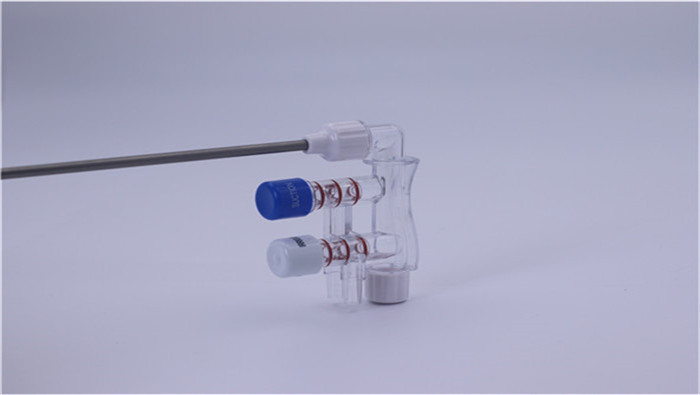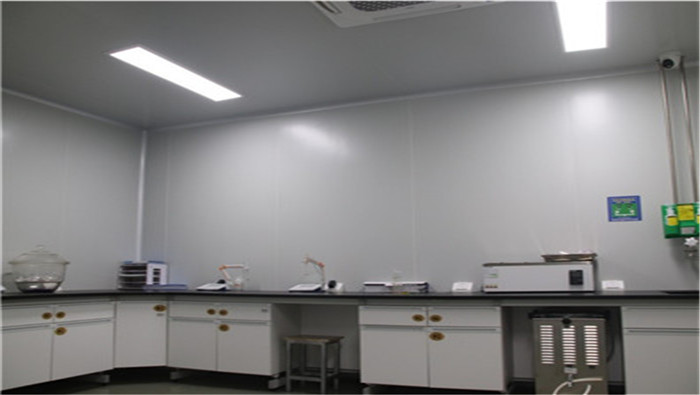

In laparoscopic surgery, the single-use irrigation and suction device is a key instrument for maintaining a clear surgical field and assisting operation. Its core functions include flushing fluid, removing smoke and assisting in tissue separation, but improper operation may lead to serious consequences. This article analyzes the standard points of flushing and suction action and the risk of misoperation from the perspective of clinical practice.

I. Notes on flushing operation
Pressure control
Normative requirements: Flushing pressure should be adapted to the vulnerability of the tissue, and it is usually recommended to use pulsed flushing (non-continuous jet), and the pressure range should be controlled within the clinically recommended safety threshold (e.g., 30-60 mmHg).
Risk avoidance: Avoid high-pressure flushing of sensitive areas (e.g., vascular anastomoses, nerve plexus) to prevent tissue tearing or edema caused by fluid shock.
Temperature management
Flushing fluid temperature: Saline close to body temperature (about 37°C) is recommended; too cold fluid may induce organ spasm, while too hot fluid increases the risk of thermal injury.
Flushing direction and angle
Operation tips: The flushing tube should be at an angle of 30°-45° with the tissue surface, avoiding the local pressure concentration caused by vertical jetting.
Maintenance of field of vision: Prioritize flushing the edge of the field, gradually remove the accumulated blood or foreign objects from the outside to the inside, and avoid directly flushing the key anatomical structures.
II .Precautions for suction operation
Negative pressure adjustment
Pressure range: Dynamically adjust the negative pressure according to the type of tissue (the conventional setting is 100-150 mmHg), when suctioning parenchymal organs (e.g., liver, spleen) need to reduce the negative pressure to 80-100 mmHg.
Flow control: High-flow suction may lead to rapid fluid loss, and intermittent maneuvers should be used to maintain pneumoperitoneum stability.
Instrument contact management
Non-contact principle: the suction head should be kept at a distance of 1-2 mm from the tissue, using negative pressure to adsorb the fluid instead of directly contacting the tissue surface.
Moving path: Adopt the “Z” shape to move slowly, avoiding long time suction in the same position, resulting in tissue adsorption damage.
Smoke removal specifications
Layered attraction: When the electrosurgical knife produces smoke, prioritize the attraction of the smoke layer (5-10 cm from the operative field), and then deal with the lower layer of liquid to maintain a clear field of view.
III.Analysis of the consequences of misoperation
Clinical risks of improper flushing
Tissue injury: High-pressure flushing may lead to mesenteric edema, stripping of the plasma layer of the organs, and even trigger postoperative adhesions.
Spread of infection: Disorderly rinsing may spread infectious fluid to other areas of the abdominal cavity, increasing the risk of sepsis.
Thermal injury: high temperature rinsing fluid in direct contact with sensitive tissues such as ureter may cause irreversible damage.
Potential hazards of uncontrolled suction
Mechanical injury: high negative pressure suction causes perforation of the intestinal wall, vascular laceration, and in severe cases, need to intermediate open abdomen to stop bleeding.
Pneumoperitoneum imbalance: excessive suction leads to excessive CO₂ loss, which may cause subcutaneous emphysema or circulatory fluctuations.
Tissue misabsorption: misabsorption of structures such as omentum and intestinal lipoprotuberance, resulting in mechanical obstruction or instrument malfunction.

IV.Risk Prevention and Control Strategies
Preoperative instrument inspection
Verify the sensitivity of the pressure regulating valve and test the sealing of the pipeline to avoid uncontrolled pressure during the operation.
Operator skill training
Master the ability to perceive pressure gradient through simulation training, e.g. practicing the layered suction technique by using the isolated organ model.
Instrument design optimization
Adoption of intelligent pressure feedback system (e.g. real-time digital pressure gauge) to limit overpressure operation.
Design of blunt-ended anti-adsorption suction tubes to reduce the probability of tissue aspiration.
Teamwork standardization
Clear division of labor between the main surgeon and the assistant, and confirmation of the oral command is required before the irrigation and suction operation to avoid action conflicts.
V. Examples of typical scenes
Cholecystectomy
Key points of flushing: when flushing the hepatic bed, adopt fan scattering mode, pressure ≤40 mmHg, avoid biliary vagus nerve reflex.
Suction contraindication: avoid high negative pressure suction in Calot's triangle to prevent accidental injury to the hepatic artery.
Gynecologic tumor resection
Risk control: when separating pelvic adhesions, the suction head needs to be visualized throughout, and blind exploration operation is prohibited.
Conclusion
The standardized use of irrigation suction is the cornerstone of safety in laparoscopic surgery. Operators need to precisely control the pressure parameters, operation angle and movement path, and optimize the operation process by combining the characteristics of the instruments. Through systematic training and technological innovation, the risk of mishandling can be significantly reduced, and surgical efficiency and patient prognosis can be improved.
+86 18361958211
marketing@cndonho.com
+86 18361958211
No.2 Zhiwei Road, Qiandeng Town, Kunshan City, Jiangsu Province, China




